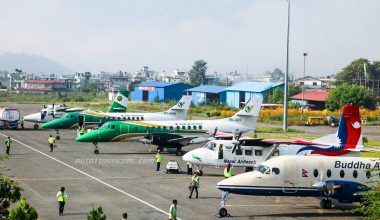Is an aircraft safe enough to fly even in a situation of an engine failure?
May 9, 2017-KATHMANDU
Normally a commercial airplane is designed to land in the condition of an engine failure.
A commercial aircraft is actually designed and manufactured to remain airborne after the takeoff even in the absence of an engine. Single engine alone itself possess the capacity to produce enough thrust to take off an aircraft: that is what an aircraft is designed for.
For the entire flight, the pilots will never use the full throttle to run the engines at a cursing altitude and normally both the engines are only needed to run the other dependent systems smoothly.
Suppose an aircraft’s single engine is blown up and engine wreckage explodes to the fuselage it sometimes even kills passengers and part of the cabin is exposed to the outside.
Yes, the aircraft is designed to operate even if big chunks from aircraft gets sliced off, as it happened on Qantas Flight 32 and Delta Air Lines Flight 1288.
Similarly, in the context of Nepal such situation mainly occurs due to bird strike. On September 15, 2016 Sita Air Dornier DO-228 aircraft made an emergency landing at the Tribhuvan International Airport in Kathmandu with one engine operation after 10 minutes of takeoff from Lukla as its left engine was deliberately shut down by the crew after the malfunction occurred.
Likewise on 29 December, 2014 a Jet Airways Boeing 737 aircraft attempted an emergency landing at TIA after a bird damaged its left engine at an altitude of 500-600 feet over the southern end of the runway.








